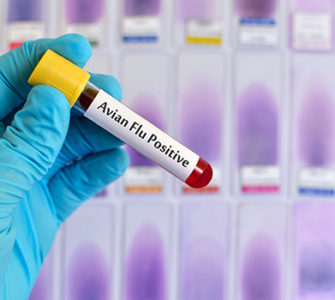Experts warn of red mite risk thanks to avian flu
Forced housing of poultry due to avian influenza is likely to lead to a higher risk of red mite infestation in flocks this spring, vets have warned.
UK-based veterinary practice St David’s Poultry Team said there is a chance of red mite populations erupting, especially as the weather gets warmer, reports Poultry World.
Red mite is common in commercial laying flocks, affecting 80 to 90% of large-scale units and costing producers across the EU as much as £150 million ($188 million) each year through hen mortality, reduced egg production and poor egg quality.
Infestations of mites are associated with numerous welfare issues including feather pecking, cannibalism, anaemia and increased restlessness.
Alison Colville-Hyde, St David’s Poultry Team field services manager, said red mite can be debilitating to hens, and cause significant economic losses to producers.
The forced hosing of birds due to avian flu and the warm weather favor the red mite’s life cycle, making an outbreak more likely.
“Mite infestations can cause huge stress on the birds,” she said. “Initially, you may not realize the mites are present, but as their population develops the hens become agitated, often hardly resting during the night, which is an important time for them to relax and recharge, ready for the next day’s feeding and egg laying.
“Red mites can carry disease from one flock to the next and in heavy infestations they suck so much blood from the bird they can cause anemia and eventually death,” she added.
“Egg production can dip and red streaks on the eggs, caused by the mites, may be seen too.”
To tackle the problem, Colville-Hyde recommends producers regularly check for infestations, and treat flocks when signs appear.
Posted on April 26, 2017

















